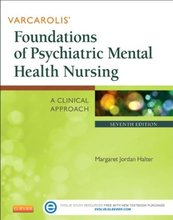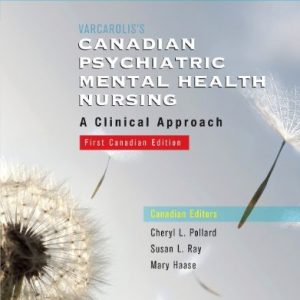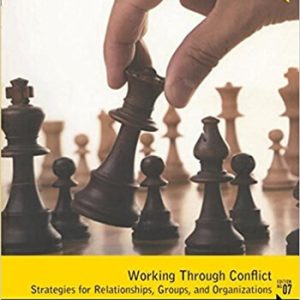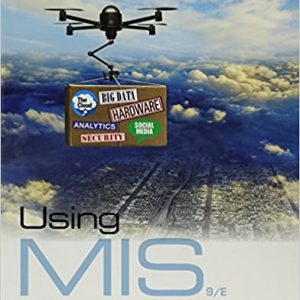Microbiology A Systems Approach Cowan 4th Edition Test Bank
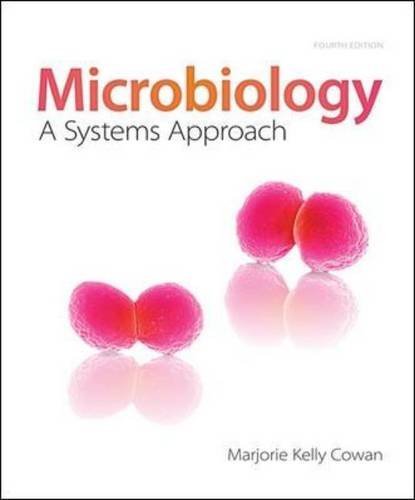
Product details:
- ISBN-10 : 0073402435
- ISBN-13 : 978-0073402437
- Author: Kelly Cowan
Microbiology: A Systems Approach is a microbiology text for non-science/allied health majors with a body systems approach to the disease chapters. It is known for its engaging writing style, instructional art program and focus on active learning. Its unique organization in the disease chapters presents students with information in the way they would encounter it in a clinical setting, instead of separating disease information by taxonomy.
The proven successful digital program including Connect, LearnSmart and SmartBook gives students access to one of the most effective and successful adaptive learning resources available on the market today.
Table contents:
Chapter 001 The Main Themes of Microbiology
Multiple Choice Questions
1. When humans manipulate the genes of microorganisms the process is called
A. Bioremediation
B. Genetic engineering
C. Epidemiology
D. Immunology
E. Taxonomy
2. Which of the following is not considered a microorganism?
A. Mosquito
B. Protozoa
C. Bacteria
D. Viruses
E. Fungi
3. All microorganisms are best defined as organisms that
A. Cause human disease
B. Lack a cell nucleus
C. Are infectious particles
D. Are too small to be seen with the unaided eye
E. Can only be found growing in laboratories
4. Which activity is an example of biotechnology?
A. Bacteria in the soil secreting an antibiotic to kill competitors
B. A microbiologist using the microscope to study bacteria
C. Egyptians using moldy bread on wounds
D. Eschericia coli producing human insulin
E. Public health officials monitoring diseases in a community
5. Living things ordinarily too small to be seen with the unaided eye are termed
A. Bacteria
B. Viruses
C. Parasites
D. Microorganisms
E. None of the choices is correct
6. The study of the immune response to infection caused by microorganisms is
A. Hypersensitivity
B. Epidemiology
C. Immunology
D. Morbidity
E. Geomicrobiology
7. Which of the following does not indicate microbe involvement in energy and nutrient flow?
A. Formation of oxygen by an oxygenic photosynthesis
B. Formation of greenhouse gases
C. Formation of soil
D. Digestion of complex carbohydrates in animal diets
E. Decomposition of dead matter and wastes
8. The microorganisms that recycle nutrients by breaking down dead matter and wastes are called
A. Decomposers
B. Prokaryotes
C. Pathogens
D. Eukaryotes
E. Fermenters
9. The microorganisms that do not have a nucleus in their cells are called
A. Decomposers
B. Prokaryotes
C. Pathogens
D. Eukaryotes
E. Fermenters
10. The first prokaryotes appeared about ___ billion years ago.
A. 5
B. 4
C. 3
D. 2
E. 1
11. Which of the following is not a human use of microorganisms?
A. Baking bread
B. Treating water and sewage
C. Breaking down chocolate
D. Mass producing antibiotics
E. Cleaning up oil spills
12. Using microbes to detoxify a site contaminated with heavy metals is an example of
A. Biotechnology
B. Bioremediation
C. Decomposition
D. Immunology
E. Epidemiology
13. Disease-causing microorganisms are called
A. Decomposers
B. Prokaryotes
C. Pathogens
D. Eukaryotes
E. Fermenters
14. The number one worldwide infectious diseases are
A. AIDS related diseases
B. Diarrhea diseases
C. Malaria diseases
D. Measles
E. Respiratory diseases
15. Which of the following is a unique characteristic of viruses that distinguishes them from the other major groups of microorganisms?
A. Cause human disease
B. Lack a nucleus
C. Cannot be seen without a microscope
D. Contain genetic material
E. Lack cell structure
16. Helminths are
A. Bacteria
B. Protozoa
C. Molds
D. Parasitic worms
E. Infectious particles
17. Organisms called parasites are
A. Always classified in the kingdom Monera
B. Always harmful to their host
C. The decomposers in ecosystems
D. Always a virus
E. Free-living
18. Which group of microorganisms is composed only of hereditary material wrapped in a protein covering?
A. Viruses
B. Bacteria
C. Parasites
D. Fungi
E. Yeasts
19. The Dutch merchant who made and used quality magnifying lenses to see and record microorganisms was
A. Francesco Redi
B. Antonie van Leeuwenhoek
C. Louis Pasteur
D. Joseph Lister
E. Robert Koch
20. Which of the following is not a process in the scientific method?
A. Belief in a preconceived idea
B. Formulate a hypothesis
C. Systematic observation
D. Laboratory experimentation
E. Development of a theory
21. Experimentation
A. Is designed to refute an hypothesis
B. Is designed to support an hypothesis
C. Provides a means to gather subjective data
D. Provides a means to gather objective data
E. Is the first step in the scientific method
22. A scientist that constructs a hypothesis and then tests its validity by outlining predicted events of the hypothesis followed by experiments to test for those events is using the _____ approach.
A. Koch
B. Scientific method
C. Spontaneous generation
D. Taxonomic
E. None of the choices is correct
23. The scientific method includes all of the following except
A. Hypothesis
B. Experimentation
C. Observation
D. Control group
E. Theory
24. Koch’s postulates are criteria used to establish that
A. Microbes are found on dust particles
B. A specific microbe is the cause of a specific disease
C. Life forms can only arise from preexisting life forms
D. A specific microbe should be classified in a specific kingdom
E. Microbes can be used to clean up toxic spills
25. The surgeon who advocated using disinfectants on hands and in the air prior to surgery was
A. Joseph Lister
B. Ignaz Semmelweis
C. Robert Koch
D. Louis Pasteur
E. Antonie van Leeuwenhoek
26. Sterile refers to
A. Pathogen free
B. Absence of spores
C. Absence of any life forms and viral particles
D. Pasteurized
E. Homogenized
27. Which scientist showed that anthrax was caused by the bacterium, Bacillus anthracis?
A. Joseph Lister
B. Ignaz Semmelweis
C. Robert Koch
D. Louis Pasteur
E. Antonie van Leeuwenhoek
28. Taxonomy does not involve
A. Nomenclature
B. Classification
C. Taxa
D. Identification
E. Common name
29. Which scientific field is involved in the identification, classification and naming of organisms?
A. Nomenclature
B. Taxonomy
C. Phylogeny
D. Woesean classification
E. None of the choices is correct
30. The orderly arrangement of organisms into a hierarchy of taxa is called
A. Classification
B. Identification
C. Nomenclature
D. Experimentation
E. Biotechnology
People also search:
microbiology a systems approach 4th edition
microbiology a systems approach quizlet
microbiology a system approach
microbiology a systems approach 6th edition
cowan microbiology
cowan microbiology fundamentals a clinical approach


